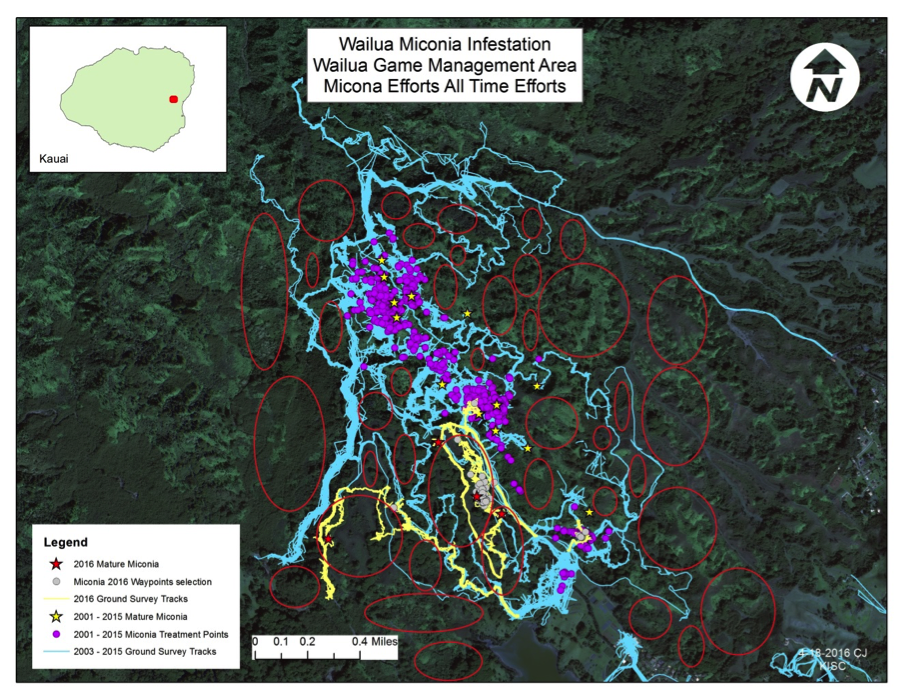Posted July 25, 2016 by Rachel Smith

Miconia calvescens, Velvet Tree, the Purple Plague, or Green Cancer; it has many names, is one of the worst invasive species in Hawaii, and one of the most destructive plants in tropical rainforests throughout the Pacific. While populations on Kauai remain minimal, we still take infestations of this plant very seriously. One Miconia tree can produce over 20 million seeds per year, with a seed bank viability of up to 20 years. Miconia is known to create dense monotypic stands, shading out the entire understory of a forest, and drastically change the functions of ecosystems. This plant has always been KISC’s #1 target. We have held a fixed Miconia schedule of once every 4 weeks, whereby, the crew heads out into the forest on foot, collecting seedlings and treating mature plants. However, as of 2016, the KISC crew has been focusing on Miconia efforts twice a week.
As KISC has expanded in staff over the past two years, we have been able to free up time to still have the same amount of boots previously on the ground, but also now have a full time data technician summarizing and reviewing historical data. With new GIS technology and the hard work of Cleve Javier (KISC Data Technician), KISC now has a much clearer view of our historical Miconia ground and helicopter surveys. The product of Cleve’s work has given us new data showing pockets of additional potential Miconia habitat. This information has made it feasible to make predictions of where possible by-passed plants may be located.

The yellow track lines in the above map represent the 2016 ground surveys completed in our Miconia management area. Previously, the highlighted area had only been surveyed by helicopter. Due to increasing density of Albizia coverage in that area, in recent years we have had limited visibility to see any small trees from a helicopter. After sending crews on foot, into some of these previously aerial surveyed areas, we found the predictions to be true and located 4 mature trees and multiple seedlings. While at first, it was discouraging to find mature trees, when in recent years we’ve only found seedlings; it also gives us a broader picture of potential gaps, and areas we can improve. In the past six months, “KISC crews ground-surveyed the Game Management Area, Wailua Homesteads, and Wailua River State Park (WRSP) covering 214 acres, removing 108 immature plants and 5 mature plants. In total, including helicopter effort, 1,163 acres were surveyed with 118 immature plants found and 6 adults treated.”

We have been lucky on Kauai. Some of the other islands have dense Miconia stands, and areas where it will never be eradicated, only managed. On Kauai, we still have the expectation of eradication. KISC will continue to explore areas under Albizia canopy and work towards closing all the potential gaps. Once we get a handle on any mature trees, we move into the monitoring phase, and look forward to keeping Kauai Miconia free.
